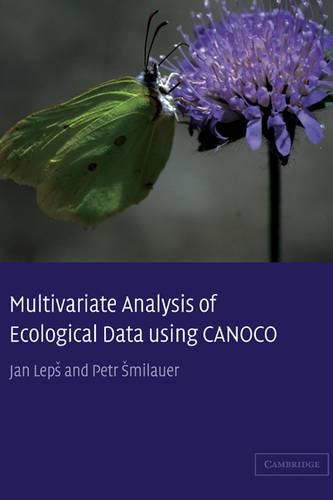Readings Newsletter
Become a Readings Member to make your shopping experience even easier.
Sign in or sign up for free!
You’re not far away from qualifying for FREE standard shipping within Australia
You’ve qualified for FREE standard shipping within Australia
The cart is loading…






This book is primarily written for ecologists needing to analyse data resulting from field observations and experiments. It will be particularly useful for students and researchers dealing with complex ecological problems, such as the variation of biotic communities with environmental conditions or the response of biotic communities to experimental manipulation. Following a simple introduction to ordination methods, the text focuses on constrained ordination methods (RDA, CCA) and the use of permutation tests on statistical hypotheses of multivariate data. An overview of classification methods, or modern regression methods (GLM, GAM, loess), is provided and guidance on the correct interpretation of ordination diagrams is given. Seven case studies of varying difficulty help to illustrate the suggested analytical methods, using the Canoco for Windows software. The case studies utilise both the descriptive and manipulative approaches, and they are supported by data sets and project files available from the book website.
$9.00 standard shipping within Australia
FREE standard shipping within Australia for orders over $100.00
Express & International shipping calculated at checkout
This book is primarily written for ecologists needing to analyse data resulting from field observations and experiments. It will be particularly useful for students and researchers dealing with complex ecological problems, such as the variation of biotic communities with environmental conditions or the response of biotic communities to experimental manipulation. Following a simple introduction to ordination methods, the text focuses on constrained ordination methods (RDA, CCA) and the use of permutation tests on statistical hypotheses of multivariate data. An overview of classification methods, or modern regression methods (GLM, GAM, loess), is provided and guidance on the correct interpretation of ordination diagrams is given. Seven case studies of varying difficulty help to illustrate the suggested analytical methods, using the Canoco for Windows software. The case studies utilise both the descriptive and manipulative approaches, and they are supported by data sets and project files available from the book website.